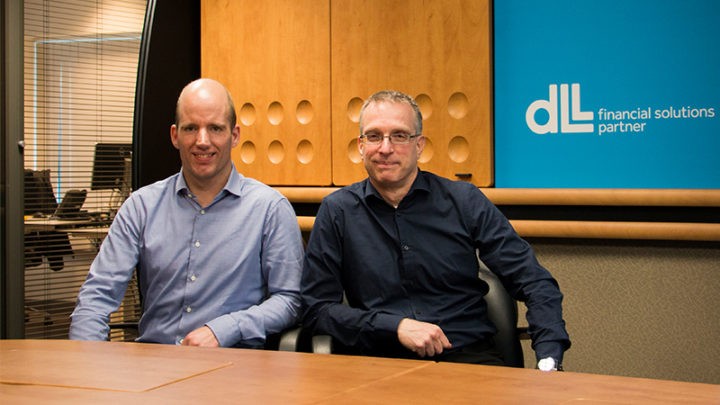How to Prevent Reputational Damage by Applying Customer Due Diligence
Aug 29, 2019
Insurance fraud fighting and risk assessment best practices series. What we’ve learned from over 300 implementations at P&C insurance carriers globally.
Just as privacy is a hot topic for Facebook or Twitter, compliance is more and more a defining topic for insurers and financial institutions. Regulators are conducting robust research on this. The results are loud and clear: the financial sector fails to control customers on Sanction lists, Auditability and Customer Due Diligence.
A remarkable result, because no financial organization wants to consciously or deliberately cooperate in money laundering practices or terrorism, and that certainly applies to insurance companies. Accepting any client without compliance checks may temporarily boost sales, however, in the long run it will be counter-productive and harm the company interests. There is not only a chance to get a fine, in the worst-case scenario a company’s license can be revoked.
Why you should Know Your Client well?
A good business relationship is based on granting each other the pleasure of making the transaction out of mutual interest. For example, a finance company would like information about the debt position, integrity and payment morality of a prospective client. A fire insurer is another example. This type of insurer would like information about the fire hazard of the company to be insured, about the integrity of the owner and about the location where the company is situated. Is it a location prone to fires or where the risk of the fire spreading to an adjacent building is greater than would commonly be the case?
CDD & KYC: How do we get there?
There are many possibilities when it comes to gathering information and limiting risks, even within the regulatory boundaries of the insurance industry. In the past, the account manager or the underwriter spent a lot of time trying to retrieve information manually. As a result, gathering information was cumbersome, especially because Sanction and PEP lists change constantly. Today, this can be done accurately and virtually real-time with automated data analysis, even on a daily basis. New hits are reported immediately. As such, being compliant and staying compliant is no longer a burden. Download the ebook on automated underwriting here.

The DLL example
DLL is a worldwide partner for integrated financial solutions. With leasing and factoring, they support the full life cycle for both the commercial and private sector.
Challenge DLL cannot permit themselves to include wrong information in contracts; they need to be judicially waterproof. In their solution, request vary from getting a quote to generating the contract. All information required to complete a contract is prefilled once the contract is generated, as long as the information is available. This means that agents can easily complete a lease request, do calculations and run credit checks. In the delivered contracts, a way to include all drawing powers from Chamber of Commerce (CoC) abstracts was still missing. That information needed to be extracted and entered manually after the contract was set up. This caused delays in the process and proved to be error-prone. Typos, wrong interpretations of the data and outdated knowledge around rules and regulations could be embedded in the contracts.
The results Because DLL wanted to fully enable self-support by the business and deliver value to their agents, the IT department went out to search for a drawing power authorization solution. In their online tool DLL created an integrated solution with FRISS. Whenever an agent enters a quote, they will generate a contract if the quote gets accepted. During the generation process, FRISS receives a request to search for any drawing power at the applicant, based on a CoC number. Both the internal customer (the Vendor Leasing department of DLL) and the external customer (DLL agents) are very satisfied with the solution. They have improved several critical parts of the process by automatically adding authorized signers:
The process is more user friendly. Requests can be managed from one application and are automatically enhanced with details;
The process is more accurate. Typos are a thing of the past and there is no need to interpret information. Above all we are sure that all authorized signers are added correctly to the contract;
Customer satisfaction improved. DLL delivers the correct contract details the first time. Therefore, they do not have to go back to the customer in case something turned out to be wrong after the contract had been signed. Also, no authorized signatures are missing;
A higher run–through-rate. Finding and adding all the drawing powers to the contracts would normally take 15 minutes. Because this information is now instantly available, DLL saves themselves this precious time when we generate a contract.

Setting the scene
No insurance company is immune to fraud. As much as the industry might feel prepared, fraudsters are smart and always look for the weak spot. Fraudsters use everything they have in their power to get money from insurers and they find ways to avoid getting caught. And these fraudsters are insurer-agnostic, so no one is safe. Insurance fraud is a global problem. On average, 10% of incurred losses are related to fraud. Fraud is also a growing problem, contributing to 10 to 15 percent of total claims costs. The total cost of P&C insurance fraud is more than US$308 billion per year in the US alone, according to the Coalition Against Insurance Fraud. That means insurance fraud costs the average US family between $400 and $700 per year in the form of increased premiums. By actively fighting fraud we can improve these ratios and the customer experience at the same time. It’s time to take our anti-fraud efforts to a higher level. The good news here is that the battle against fraud is at least being taken more seriously. Fraud affects the entire industry, and fighting it pays off. US insurers say that fraud has climbed over 60% over the last three years. Meanwhile, the total savings of proven fraud cases exceeded $116 million. Insurers are seeing an increase in fraudulent cases and believe awareness and cooperation between departments is key to stopping this costly problem. The insurance industry is working hard to improve on fraud detection and prevention. It is definitely a topic on the agenda and not underestimated. In this case, everything starts with awareness.

